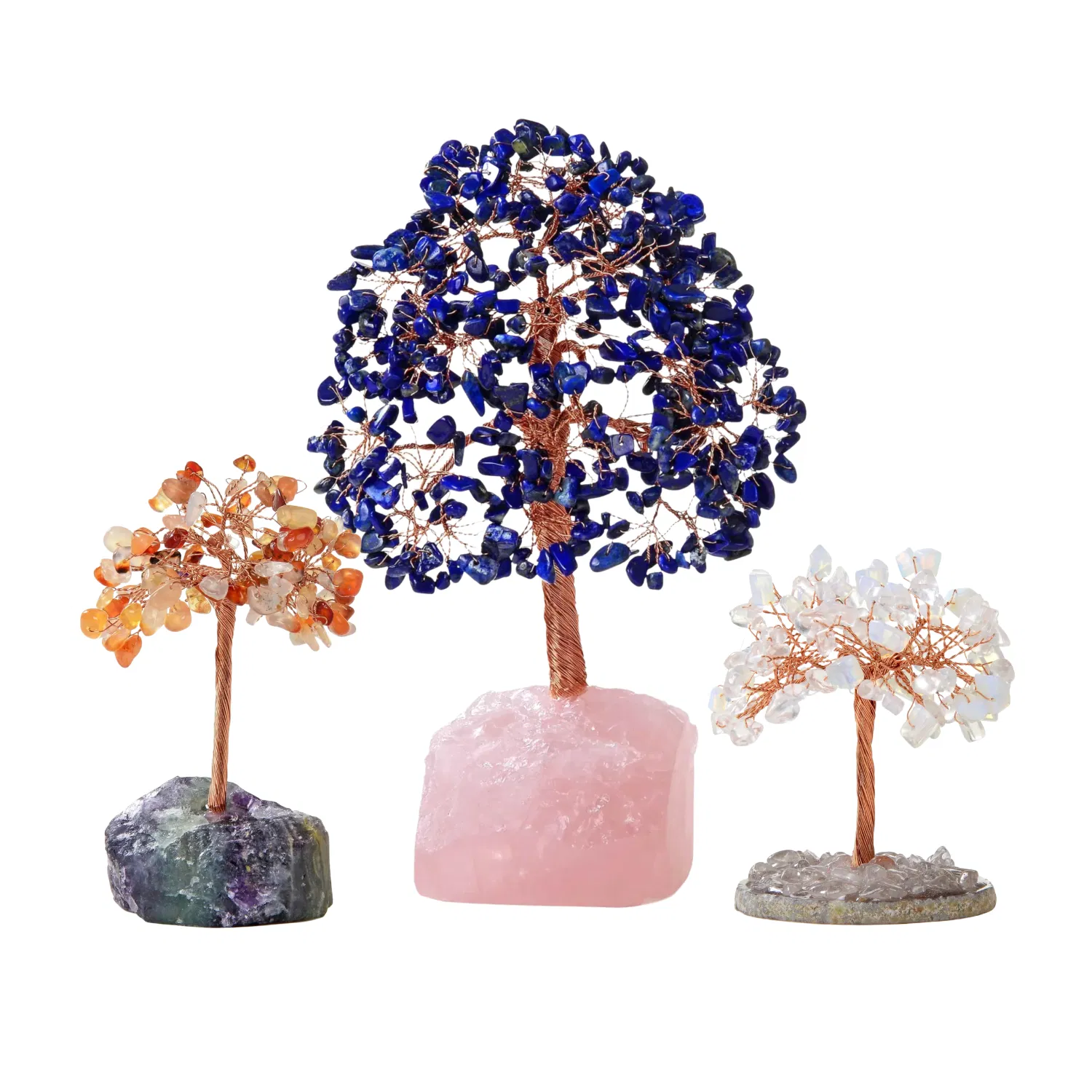The concept of gemstone trees has roots in various cultures, with many regarding them as symbols of growth, prosperity, and harmony. The origins of gemstone trees can be traced back to multiple cultures and traditions, including Chinese, Egyptian, and Mayan. In feng shui, for instance, they’re believed to attract positive energy and balance to a space. Sometimes referred to as “money trees” or “wishing trees,” they are cherished for their ability to invite abundance and luck.
How Gemstone Trees Are Made
Creating a gemstone tree requires patience and skill. The process begins with shaping the trunk and branches, usually made from metal wire (typically twisted copper) for flexibility and durability. Artisans then select gemstones like amethyst, citrine, rose quartz, or jade, each chosen for its unique properties and vibrant colors. The gemstones are often polished and drilled to attach securely to the branches. You can fluff and bend the malleable branches to your liking. Once assembled, the tree is mounted on a sturdy base, such as a slice of natural stone or to ensure stability and further enhance the look of the finished tree.
The Meaning Behind Gemstone Trees
Each gemstone tree carries a special meaning, influenced by the stones used and their arrangement. For example, a tree adorned with green aventurine or jade is associated with prosperity and good fortune, while amethyst trees are thought to promote calm and spiritual growth. Rose quartz trees are often given as gifts to symbolize love and harmony, making them a thoughtful present for a friend or loved one.


